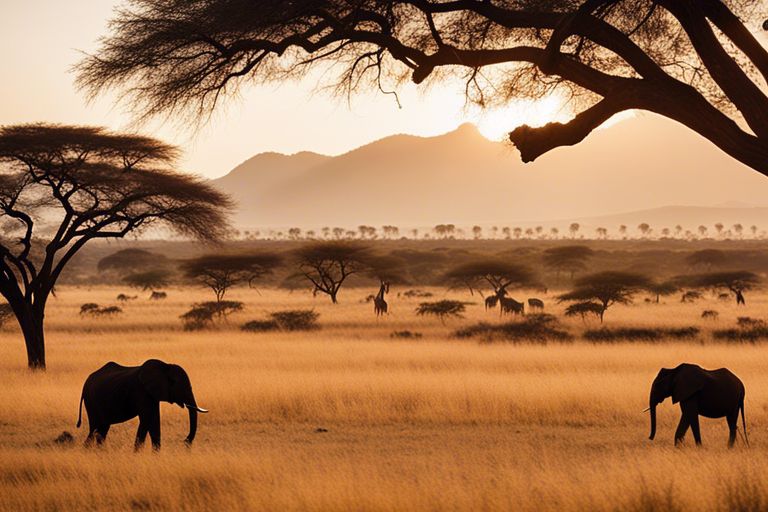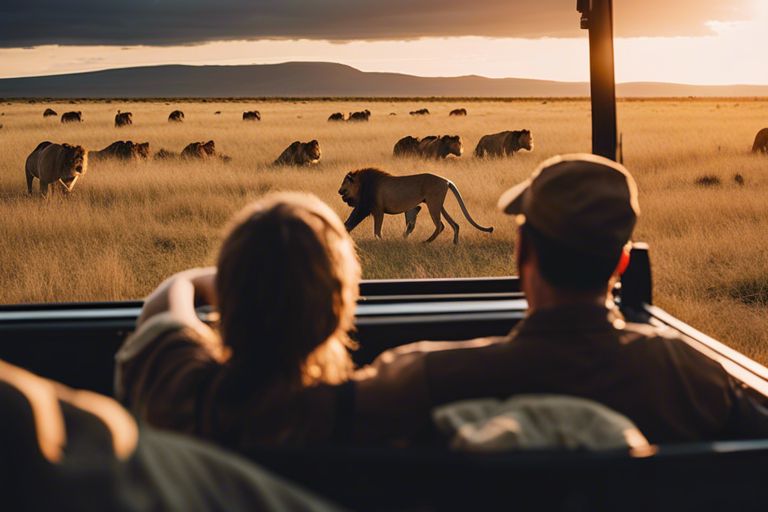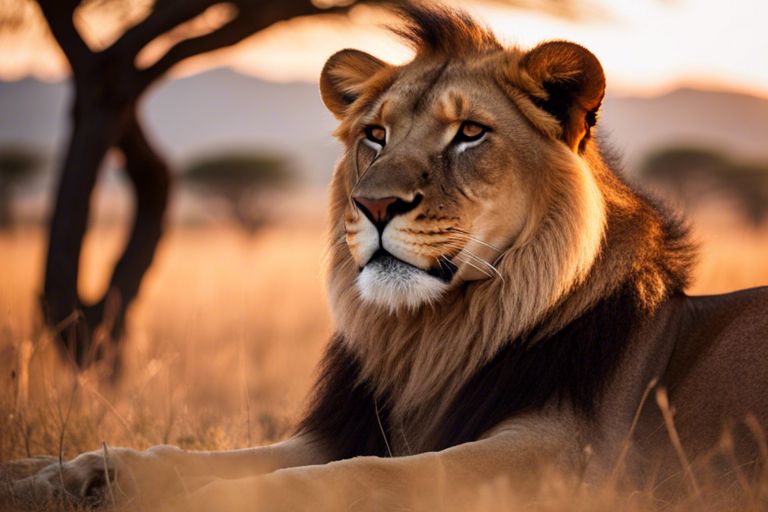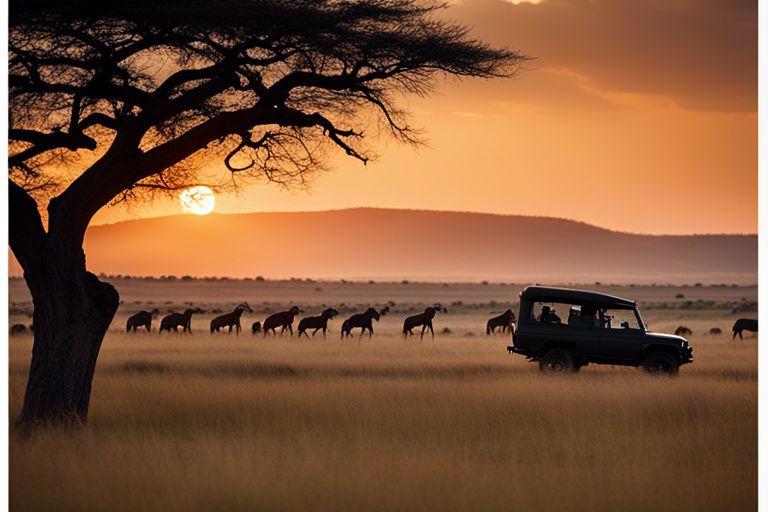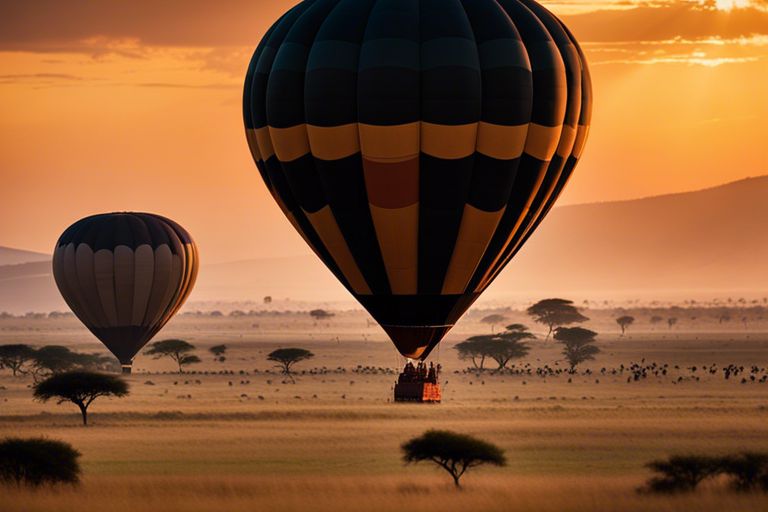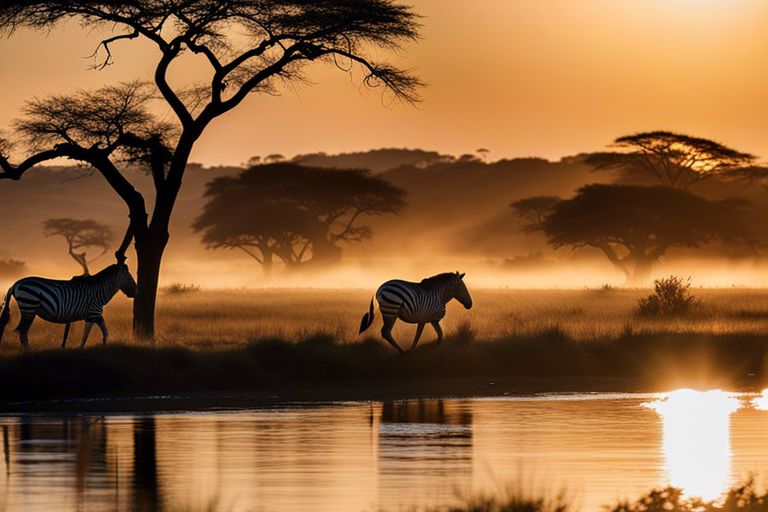What Fascinating Creatures Roam The Vast Plains Of Serengeti?
There’s a magical place on Earth where the wilderness thrives, and the circle of life unfolds in its purest form – the Serengeti. This expansive savannah in East Africa is home to an array of captivating creatures that enchant and inspire all who have the privilege of witnessing them in their natural habitat. From the majestic lions to the graceful giraffes, and the thundering herds of wildebeests, the Serengeti teems with diverse wildlife that showcases the beauty and complexity of the animal kingdom.

The Majestic Mammals of Serengeti
Little can compare to the awe-inspiring sight of the diverse wildlife that roams the vast plains of Serengeti National Park. From towering elephants to graceful giraffes, the park is home to an array of majestic mammals that captivate visitors from around the world. To explore the wonders of Serengeti National Park animals, check out this guide.
The Great Wildebeest Migration
One of the most phenomenal wildlife spectacles on the planet is the Great Wildebeest Migration in Serengeti National Park. This annual journey sees over a million wildebeest, along with hundreds of thousands of zebras and other antelope species, trekking hundreds of miles in search of greener pastures. Witnessing this mass movement of animals is a truly unforgettable experience, showcasing the raw power and resilience of nature.
Predators of the Savannah: Lions and Cheetahs
Cheetahs, with their unparalleled speed and agility, and lions, the undisputed kings of the savannah, are two of the most iconic predators that call Serengeti home. These apex predators play a crucial role in maintaining the delicate balance of the ecosystem, ensuring the health and vitality of the landscape. While cheetahs rely on their speed to chase down prey, lions use their strength and teamwork to secure their meals. Witnessing these majestic predators in action is a thrilling and humbling experience, showcasing the unforgiving reality of the circle of life in the wild.

Birds of the Serengeti
Clearly, the Serengeti is a haven for an incredible variety of bird species. For more information on the diverse wildlife found in the Serengeti National Park in Tanzania, visit Wildlife in Serengeti National Park – Tanzania.
The Hunters on Wings: Eagles and Vultures
Any visitor to the Serengeti cannot help but be in awe of the majestic predators that rule the skies. Eagles and vultures are among the top hunters in the region, with their keen eyesight and powerful beaks enabling them to spot and feast on their prey from great heights.
Songbirds and Migratory Species
The Serengeti is not just home to large raptors, but also a myriad of songbirds and migratory species that add melody to the vast plains. These birds come from far and wide, seeking refuge in the Serengeti during their long journeys across continents.
Another interesting aspect of songbirds and migratory species in the Serengeti is their unique adaptations to survive in different climates and conditions. Some travel thousands of miles to reach the Serengeti, showcasing the resilience and determination of these fascinating creatures.
Amphibians and Reptiles
Survival in a Dry Land: Frogs and Tortoises
Now, let’s examine into the remarkable world of amphibians and reptiles that call the Serengeti home. Despite the arid conditions of the plains, certain species have adapted to thrive in this challenging environment. Frogs and tortoises have developed fascinating strategies to survive in this dry land.
Serpents and Lizards: Masters of Camouflage
On the other hand, serpents and lizards in the Serengeti showcase the art of camouflage. These creatures have evolved remarkable abilities to blend seamlessly into their surroundings, making them masters of disguise in the vast plains. Their survival depends on their ability to remain undetected by predators and prey alike.
To dive deeper into the world of serpents and lizards in the Serengeti, it’s important to understand their unique adaptation mechanisms. From changing skin colors to mimicry of their environment, these reptiles have honed their camouflage skills over millions of years of evolution. Their ability to hide in plain sight is a testament to the incredible diversity of life in this ecosystem.
Plus, the Serengeti is also home to a variety of venomous snakes and agile lizards that play crucial roles in maintaining the delicate balance of the ecosystem. These creatures are not only fascinating to observe but also serve as important indicators of the overall health of the region’s biodiversity.
Insects and the Smaller Denizens
The Important Role of Insects
Many often overlook insects when considering the diverse ecosystem of the Serengeti, but these tiny creatures play a crucial role in maintaining the balance of the plains. From pollinating plants to serving as a food source for larger animals, insects are vital to the functioning of this vibrant ecosystem.
Lesser-Known Small Mammals and Rodents
Small mammals and rodents may not always steal the spotlight in the Serengeti, but their presence is significant. These creatures, such as the elephant shrew and the tree hyrax, contribute to the intricate food web of the plains and bring a sense of diversity to the landscape.
Insects, with their sheer numbers and diversity, form the backbone of the food chain in the Serengeti. They provide sustenance for a wide range of creatures, from birds to small mammals. Additionally, insects aid in the decomposition of organic matter, recycling nutrients back into the soil and supporting plant growth. Overall, these small but mighty beings play a vital role in the functioning of the Serengeti ecosystem.
Summing up
Considering all points discussed, it is clear that the vast plains of Serengeti are home to a plethora of fascinating creatures. From the iconic big five to the lesser-known but equally unique species, the Serengeti ecosystem thrives with wildlife diversity. The interactions, adaptations, and survival strategies of these creatures paint a captivating picture of the intricate balance of nature in one of the most renowned conservation areas in the world. Exploring the Serengeti not only offers a chance to witness these extraordinary animals up close but also provides a deeper appreciation for the complex web of life in this extraordinary ecosystem.
FAQ
Q: What kinds of fascinating creatures can be found in the vast plains of Serengeti?
A: The Serengeti is home to a wide variety of wildlife, including lions, elephants, giraffes, zebras, wildebeest, and many more iconic African species.
Q: Why is the Serengeti known as one of the best places for wildlife viewing?
A: The Serengeti is renowned for its high density of wildlife and its annual migration of millions of animals, making it a prime destination for wildlife enthusiasts.
Q: What is the Great Migration and why is it so special?
A: The Great Migration is the annual movement of millions of wildebeest, zebras, and other animals in search of food and water. It is a spectacular sight to witness and is considered one of the natural wonders of the world.
Q: Are there any endangered species that can be found in the Serengeti?
A: Yes, the Serengeti is home to several endangered species, including the black rhinoceros and the African wild dog. Conservation efforts are in place to protect these vulnerable populations.
Q: What is the best time of year to visit the Serengeti for wildlife viewing?
A: The best time to visit the Serengeti for wildlife viewing is during the dry season, from late June to September, when the animals gather around water sources and the vegetation is less dense, making it easier to spot them.

